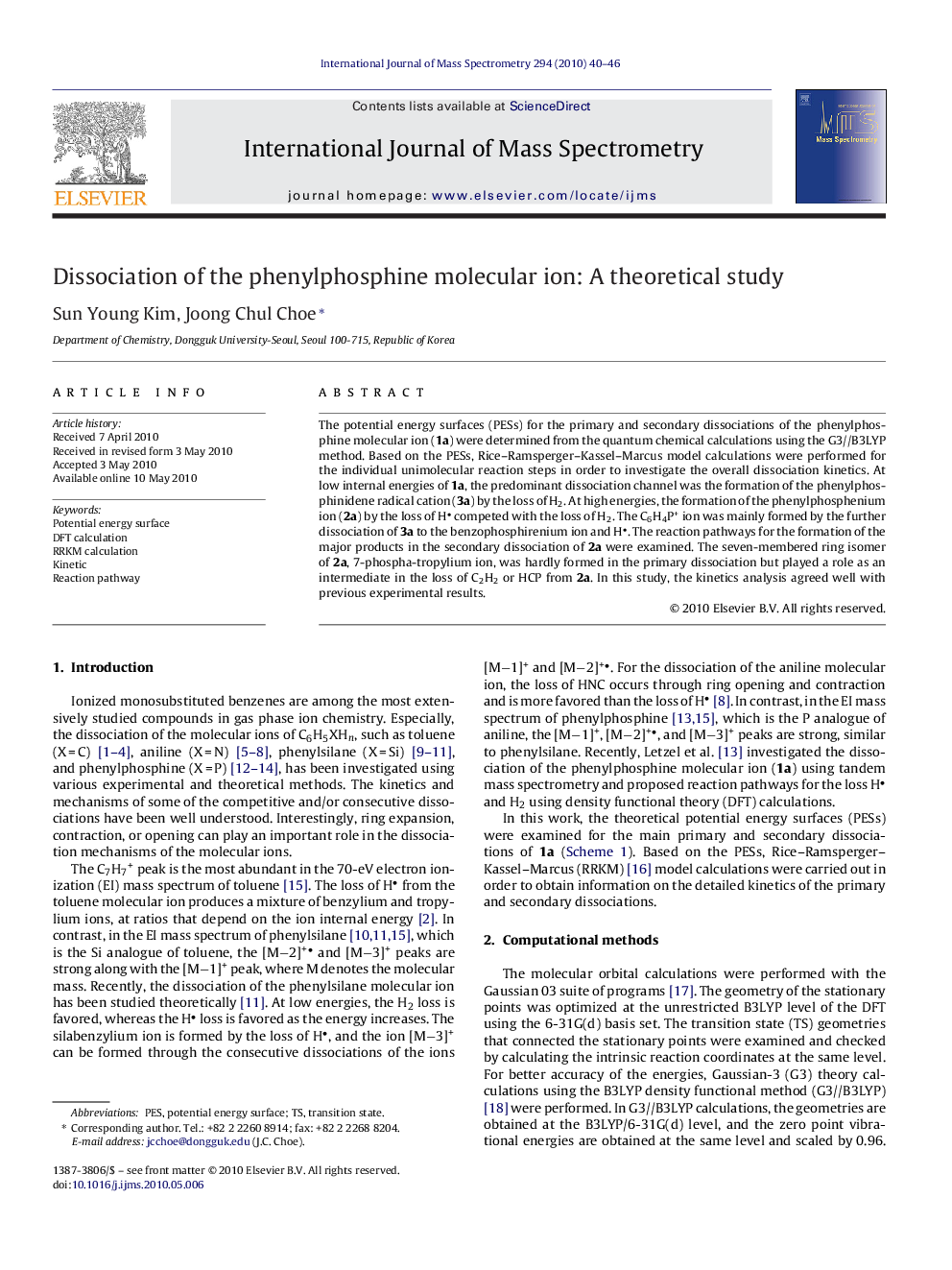| Article ID | Journal | Published Year | Pages | File Type |
|---|---|---|---|---|
| 1192384 | International Journal of Mass Spectrometry | 2010 | 7 Pages |
The potential energy surfaces (PESs) for the primary and secondary dissociations of the phenylphosphine molecular ion (1a) were determined from the quantum chemical calculations using the G3//B3LYP method. Based on the PESs, Rice–Ramsperger–Kassel–Marcus model calculations were performed for the individual unimolecular reaction steps in order to investigate the overall dissociation kinetics. At low internal energies of 1a, the predominant dissociation channel was the formation of the phenylphosphinidene radical cation (3a) by the loss of H2. At high energies, the formation of the phenylphosphenium ion (2a) by the loss of H competed with the loss of H2. The C6H4P+ ion was mainly formed by the further dissociation of 3a to the benzophosphirenium ion and H. The reaction pathways for the formation of the major products in the secondary dissociation of 2a were examined. The seven-membered ring isomer of 2a, 7-phospha-tropylium ion, was hardly formed in the primary dissociation but played a role as an intermediate in the loss of C2H2 or HCP from 2a. In this study, the kinetics analysis agreed well with previous experimental results.
Graphical abstractThe primary and secondary dissociations of the phenylphosphine molecular ion were examined to understand their kinetics and mechanisms from the DFT, G3//B3LYP and RRKM calculations.Figure optionsDownload full-size imageDownload high-quality image (92 K)Download as PowerPoint slide
